Angioplasty Cost in Turkey from top hospitals starts from TRY 135630 (USD 4500)approx
.Angioplasty, also known as percutaneous transluminal angioplasty or balloon angioplasty, is a special procedure conducted to widen the obstructed or narrowed arteries or veins. This minimally invasive procedure is mostly used for the treatment of arterial atherosclerosis and it helps resume normal flow of blood to the heart. During this procedure, a catheter with a balloon attached to its tip is inserted into the narrowed artery or vein. The balloon is inflated and a stent is placed to open the blocked artery or vein. Later, the stent is left in place and the balloon is deflated and withdrawn along with the catheter.
People from across the world can undergo a coronary angioplasty in Turkey without any trouble. The country house some of the best and experienced interventional cardiologists in the world. The surgeons who perform this procedure are extremely skilled and possess years of experience in treating patients with cardiac disorders. The country has carved a name for itself at a global level by offering state-of-the-art cardiac treatment services to patients from all walks of life.
| Country | Cost | Local_currency |
|---|---|---|
| Czechia | USD 8000 | Czechia 181520 |
| Greece | USD 17500 | Greece 16100 |
| India | USD 3600 | India 299340 |
| Israel | USD 18000 | Israel 68400 |
| Malaysia | USD 9500 | Malaysia 44745 |
| Poland | USD 6000 | Poland 24240 |
| South Korea | USD 18500 | South Korea 24839765 |
| Spain | USD 19500 | Spain 17940 |
| Switzerland | USD 12500 | Switzerland 10750 |
| Thailand | USD 10600 | Thailand 377890 |
| Tunisia | USD 8000 | Tunisia 24880 |
| Turkey | USD 4500 | Turkey 135630 |
| United Arab Emirates | USD 8580 | United Arab Emirates 31489 |
Treatment cost
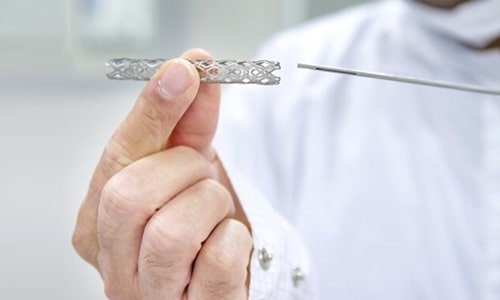
We provide numerous services for your medical journey, including:
We offer packages at reasonable pricing that include a variety of additional advantages, making it a better deal than paying for individual perks at the hospital. Angioplasty Surgery is required when a person has been diagnosed with blocked or narrowed coronary arteries. It is needed to clear the blockages and ensure restoration of normal blood flow through the vessels and arteries to the heart muscles. The procedure follows an insertion of a thin tube (a catheter) via incision in the leg or arm and guiding it to the heart. Two types of Angioplasties are there- Coronary and Balloon angioplasty. Therefore, the procedure is quite helpful to remove the obstruction or clotting., Consider this comprehensive & discounted package for Angioplasty surgery at Sharda Hospital, India.
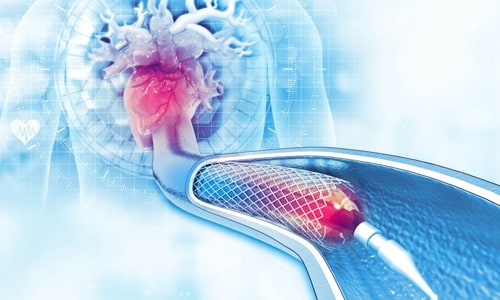
MediGence is offering immense facilities for your medical journey such as:
We offer packages at reasonable pricing that include a variety of additional advantages, making it a better deal than paying for individual perks at the hospital. Angioplasty Surgery is required when a person has been diagnosed with blocked or narrowed coronary arteries. It is needed to clear the blockages and ensure restoration of normal blood flow through the vessels and arteries to the heart muscles. The procedure follows an insertion of a thin tube (a catheter) via incision in the leg or arm and guiding it to the heart. Two types of Angioplasties are there- Coronary and Balloon angioplasty. Therefore, the procedure is quite helpful to remove the obstruction or clotting., Consider this comprehensive & discounted package for Angioplasty surgery at Pushpawati Singhania Research Institute, India.

Types of Angioplasty in Medicana International Istanbul and its associated cost
| Treatment Option | Approximate Cost Range (USD) | Approximate Cost Range (TRY) |
|---|---|---|
| Angioplasty (Overall) | 3950 - 7209 | 116820 - 215761 |
| Coronary Angioplasty (PCI) | 5124 - 7249 | 155899 - 219920 |
| Peripheral Angioplasty | 4466 - 6879 | 134449 - 199848 |
| Balloon Angioplasty | 3999 - 6163 | 119944 - 189655 |

Types of Angioplasty in Memorial Antalya Hospital and its associated cost
| Treatment Option | Approximate Cost Range (USD) | Approximate Cost Range (TRY) |
|---|---|---|
| Angioplasty (Overall) | 4008 - 7312 | 117009 - 218899 |
| Coronary Angioplasty (PCI) | 5123 - 7161 | 155094 - 221165 |
| Peripheral Angioplasty | 4547 - 6774 | 134980 - 202910 |
| Balloon Angioplasty | 3996 - 6252 | 118394 - 184766 |
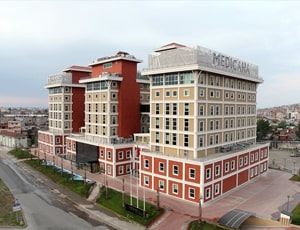
Types of Angioplasty in Medicana International Samsun Hospital and its associated cost
| Treatment Option | Approximate Cost Range (USD) | Approximate Cost Range (TRY) |
|---|---|---|
| Angioplasty (Overall) | 3949 - 7331 | 118615 - 219116 |
| Coronary Angioplasty (PCI) | 5012 - 7201 | 155087 - 221275 |
| Peripheral Angioplasty | 4548 - 6659 | 134147 - 207643 |
| Balloon Angioplasty | 3867 - 6176 | 118224 - 188752 |

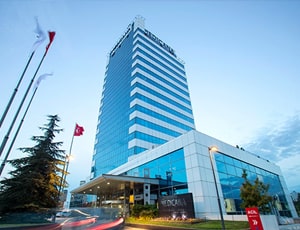
Types of Angioplasty in Medicana International Ankara Hospital and its associated cost
| Treatment Option | Approximate Cost Range (USD) | Approximate Cost Range (TRY) |
|---|---|---|
| Angioplasty (Overall) | 4017 - 7241 | 120169 - 218852 |
| Coronary Angioplasty (PCI) | 5008 - 7436 | 154553 - 221633 |
| Peripheral Angioplasty | 4402 - 6788 | 138058 - 202135 |
| Balloon Angioplasty | 3950 - 6165 | 121034 - 184740 |
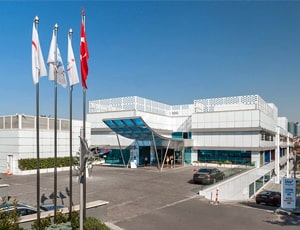
Types of Angioplasty in Liv Hospital Ulus and its associated cost
| Treatment Option | Approximate Cost Range (USD) | Approximate Cost Range (TRY) |
|---|---|---|
| Angioplasty (Overall) | 3918 - 7343 | 118753 - 217473 |
| Coronary Angioplasty (PCI) | 5147 - 7470 | 151824 - 216266 |
| Peripheral Angioplasty | 4599 - 6882 | 134877 - 202049 |
| Balloon Angioplasty | 3876 - 6156 | 117449 - 186834 |

Types of Angioplasty in Asya Hospital and its associated cost
| Treatment Option | Approximate Cost Range (USD) | Approximate Cost Range (TRY) |
|---|---|---|
| Angioplasty (Overall) | 3561 - 6622 | 106721 - 199421 |
| Coronary Angioplasty (PCI) | 4575 - 6613 | 138073 - 199602 |
| Peripheral Angioplasty | 4044 - 6067 | 122693 - 183174 |
| Balloon Angioplasty | 3559 - 5592 | 106650 - 169012 |

Types of Angioplasty in Medical Park Tarsus Hospital and its associated cost
| Treatment Option | Approximate Cost Range (USD) | Approximate Cost Range (TRY) |
|---|---|---|
| Angioplasty (Overall) | 3893 - 7311 | 119835 - 224894 |
| Coronary Angioplasty (PCI) | 4999 - 7408 | 150649 - 222669 |
| Peripheral Angioplasty | 4446 - 6749 | 135885 - 205660 |
| Balloon Angioplasty | 3886 - 6117 | 119029 - 185659 |

Types of Angioplasty in Medical Park Trabzon Star Hospital and its associated cost
| Treatment Option | Approximate Cost Range (USD) | Approximate Cost Range (TRY) |
|---|---|---|
| Angioplasty (Overall) | 3853 - 7314 | 118689 - 223175 |
| Coronary Angioplasty (PCI) | 5117 - 7340 | 150248 - 223642 |
| Peripheral Angioplasty | 4567 - 6641 | 138380 - 203955 |
| Balloon Angioplasty | 3917 - 6155 | 120420 - 189358 |

Types of Angioplasty in VM Medical Park Ankara and its associated cost
| Treatment Option | Approximate Cost Range (USD) | Approximate Cost Range (TRY) |
|---|---|---|
| Angioplasty (Overall) | 4006 - 7237 | 119856 - 216146 |
| Coronary Angioplasty (PCI) | 5061 - 7473 | 152304 - 221341 |
| Peripheral Angioplasty | 4416 - 6858 | 134981 - 199340 |
| Balloon Angioplasty | 3976 - 6104 | 116090 - 189054 |

Types of Angioplasty in Medical Park Tokat Hospital and its associated cost
| Treatment Option | Approximate Cost Range (USD) | Approximate Cost Range (TRY) |
|---|---|---|
| Angioplasty (Overall) | 3871 - 7248 | 119962 - 221400 |
| Coronary Angioplasty (PCI) | 5134 - 7179 | 151072 - 224840 |
| Peripheral Angioplasty | 4519 - 6896 | 133038 - 199409 |
| Balloon Angioplasty | 3864 - 6156 | 118068 - 183057 |

Types of Angioplasty in Avcilar Anadolu Hospital and its associated cost
| Treatment Option | Approximate Cost Range (USD) | Approximate Cost Range (TRY) |
|---|---|---|
| Angioplasty (Overall) | 4006 - 7414 | 117145 - 216981 |
| Coronary Angioplasty (PCI) | 5127 - 7197 | 149372 - 218126 |
| Peripheral Angioplasty | 4410 - 6894 | 134082 - 204558 |
| Balloon Angioplasty | 3859 - 6201 | 118577 - 187771 |

Types of Angioplasty in Medicana Camlica Hospital and its associated cost
| Treatment Option | Approximate Cost Range (USD) | Approximate Cost Range (TRY) |
|---|---|---|
| Angioplasty (Overall) | 4010 - 7398 | 121008 - 218287 |
| Coronary Angioplasty (PCI) | 5027 - 7342 | 154375 - 218261 |
| Peripheral Angioplasty | 4544 - 6663 | 136961 - 206055 |
| Balloon Angioplasty | 3972 - 6078 | 117510 - 188288 |

Types of Angioplasty in Memorial Sisli Hospital and its associated cost
| Treatment Option | Approximate Cost Range (USD) | Approximate Cost Range (TRY) |
|---|---|---|
| Angioplasty (Overall) | 4016 - 7380 | 118230 - 216354 |
| Coronary Angioplasty (PCI) | 5163 - 7475 | 152078 - 217717 |
| Peripheral Angioplasty | 4407 - 6872 | 138341 - 203216 |
| Balloon Angioplasty | 3854 - 6127 | 121268 - 183509 |

Types of Angioplasty in Memorial Ankara Hospital and its associated cost
| Treatment Option | Approximate Cost Range (USD) | Approximate Cost Range (TRY) |
|---|---|---|
| Angioplasty (Overall) | 3996 - 7440 | 120503 - 220256 |
| Coronary Angioplasty (PCI) | 5032 - 7371 | 150198 - 217742 |
| Peripheral Angioplasty | 4511 - 6690 | 134303 - 201933 |
| Balloon Angioplasty | 3893 - 6272 | 117779 - 184020 |
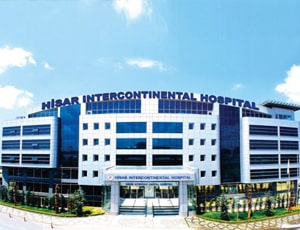
Types of Angioplasty in Hisar Intercontinental Hospital and its associated cost
| Treatment Option | Approximate Cost Range (USD) | Approximate Cost Range (TRY) |
|---|---|---|
| Angioplasty (Overall) | 4001 - 7414 | 120786 - 218386 |
| Coronary Angioplasty (PCI) | 5098 - 7221 | 155677 - 217568 |
| Peripheral Angioplasty | 4464 - 6717 | 138074 - 204610 |
| Balloon Angioplasty | 3971 - 6051 | 119667 - 184254 |
Coronary artery disease (CAD) is one of the most common heart diseases reported across the world. It results due to blood clot formation and plaque accumulation in the major blood vessels of the heart.
Balloon angioplasty is the most common endovascular procedure (procedure performed inside the blood vessel) carried out to treat coronary artery disease. In this procedure, the blood clots in the major arteries of the heart are detected and cleared by inserting a catheter into an artery of the hand (radial artery) or leg (femoral artery). This catheter consists of a balloon at its tip, which dislodges the clot to the periphery of the blood vessel after inflation.
Angioplasty may or may not be followed by coronary stent placement, depending on the angiography findings. This procedure is performed in patients with fewer blood clots in the vessels and those who do not respond to medications. It may also be carried out as an emergency procedure to treat a heart attack.
Step 1: Placing the patient on oral sedatives
Step 2: Administration of general anaesthesia
Step 3: Incision at the femoral artery or radial artery
Step 4: Insertion of catheter into the artery through an incision
Step 5: Guiding the catheter up to the base of the coronary artery
Step 6: Insertion of a guidewire from within the catheter into the artery up to the site of the blood clot
Step 7: Insertion of contrast dye through the catheter
Step 8: Checking for the blocks through a radiograph
Step 9: Identifying the pinpoint location of the blood clot
Step 10: Passage of guide wire through catheter just beyond the region of clot
Step 11: Inflating and deflating the balloon till normal blood flow is obtained from the vessel
Step 12: Stabilizing the stent in place
Step 13: Retrieving the catheter
Contraindications: You may not be suggested to undergo balloon angioplasty if the access vessel (femoral or radial artery) is of insufficient size and quality.
Recovery time: You will be discharged from the hospital in one day. But you should avoid strenuous activities for one month after being discharged from the hospital.
Prognosis: According to research, 79 percent of the people who receive the stent after a balloon angioplasty are relieved from angina for up to 5 years.
Ask your healthcare adviser for the best multiple options and choose the one that meets your expectations
While depending upon a range of factors, the minimum cost for Angioplasty in Turkey is USD 4500. There many SAS, JCI, TEMOS certified hospitals in Turkey that offer Angioplasty
Angioplasty cost in Turkey varies from one hospital to the other. The Angioplasty package cost usually includes all the expenses related to pre and post surgery expenses of the patient. Typically, the package cost of Angioplasty in Turkey includes the expenses related to the surgeon's fee, anesthesia, hospital, meals, nursing and ICU stay. There are many things that may increase the cost of Angioplasty in Turkey, including prolonged hospital stay and complications after the procedure.
There are many hospitals across the country that offer Angioplasty to international patients. Some of the best hospitals for Angioplasty in Turkey include the following:
While the speed of recovery may vary from patient to patient, they are still required to stay for about 18 days after discharge. During this time, the patient undergoes medical tests and consultations. this is to ensure that the treatment was successful and the patient us safe to return.
Apart from the Angioplasty cost, there are a few other daily charges that the patient may have to pay. These are the charges for daily meals and accommodation outside the hospital. The per day cost in this case may start from USD 50 per person.
Angioplasty in Turkey is offered in almost all metropolitan cities, including the following:
Patients can also avail to attend a video teleconsultation with the Angioplasty surgeon in Turkey. the following are some of the top doctors offering Angioplasty in Turkey:
| Doctor | Cost | Schedule Your Appointment |
|---|---|---|
| Dr. Ahmet Anil Sahin | USD 160 | Schedule Now |
The patient has to spend about 2 days in the hospital after Angioplasty for proper recovery and to get clearance for discharge. The doctors team review the patient's recovery during this time with the help of blood tests and imaging scans. Once they feel that everything is on track, the patient is discharged.
The average rating for Angioplasty hospitals in Turkey is 3.6. This rating is calculated on the basis of different parameters such as attitude of the nurses, cleanliness, quality of food and the pricing policy.
There are more than 40 hospitals that offer Angioplasty in Turkey. These clinics have propoer infrastructure as well as offer good quality of services when it comes to Angioplasty Apart from good services, the hospitals are known to follow all standard and legal guidelines as dictated by the local medical affairs body or organization.
Some of the top doctors for Angioplasty in Turkey are: